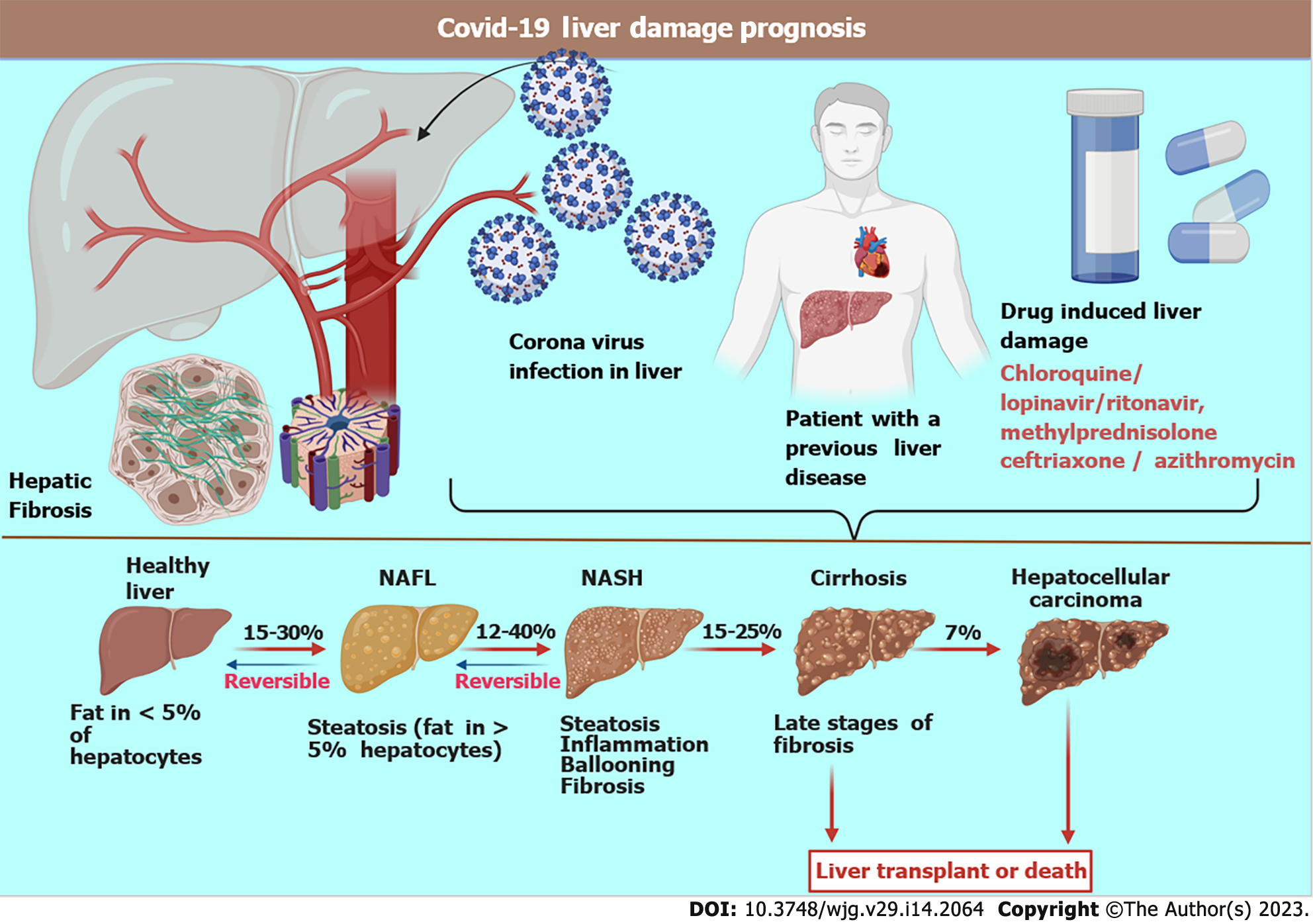Copyright
©The Author(s) 2023.
World J Gastroenterol. Apr 14, 2023; 29(14): 2064-2077
Published online Apr 14, 2023. doi: 10.3748/wjg.v29.i14.2064
Published online Apr 14, 2023. doi: 10.3748/wjg.v29.i14.2064
Figure 2 The schematic representation of the effects of severe acute respiratory syndrome coronavirus 2 on the liver.
A patient with a pre-existing liver disorder exhibits higher morbidity than patients with normal liver. Drugs may cause liver damage in some patients, making treatments ineffective. The stages of disease progression are implicated as steatosis (deposition of fat), causing a nonalcoholic fatty liver. The liver deteriorates, indicated by inflammation, ballooning of hepatocytes, and fibrosis. Severe liver cirrhosis is the next stage, which is irreversible. The final stage is hepatic cancer. COVID-19: Coronavirus disease 2019; NAFL: Nonalcoholic fatty liver; NASH: Nonalcoholic steatohepatitis.
- Citation: Khullar N, Bhatti JS, Singh S, Thukral B, Reddy PH, Bhatti GK. Insight into the liver dysfunction in COVID-19 patients: Molecular mechanisms and possible therapeutic strategies. World J Gastroenterol 2023; 29(14): 2064-2077
- URL: https://www.wjgnet.com/1007-9327/full/v29/i14/2064.htm
- DOI: https://dx.doi.org/10.3748/wjg.v29.i14.2064









